Deborah J. Ross's Blog, page 6
January 29, 2025
Another rave review of The Laran Gambit!
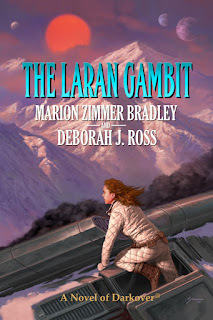
"Wonderful back story on establishing the tower! True to the spirit of Darkover and all of its cultures and the change in personal values." --Nikki K, Amazon reader
Amazon: https://tinyurl.com/5xmpd54b
Barnes and Noble: https://tinyurl.com/2ccwve44
Kobo: https://tinyurl.com/2edrfxhj
Apple: https://tinyurl.com/23c96wjs
Or in print at your local bookstore
January 27, 2025
In Troubled Times: How Stories Save Us
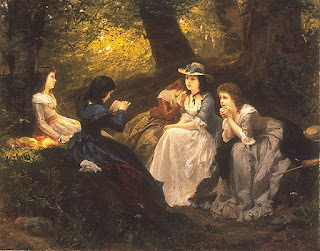 I first posted this in August, 2021. Hold on to hope!
I first posted this in August, 2021. Hold on to hope!Stories can heal and transform us. They can also becomebeacons of hope.
Quite a few years ago, when I was going through a difficultpersonal time, I came across a book about the inherent healing power of tellingour stories. No matter how scattered or flawed our lives may appear, as we tellour stories, we gain something. Patterns emerge from seeming chaos, and ourlives begin to make sense. It may be dreadful, agonizing sense, but eventragedies have order and consequence. I found that over time, the way I told mystory changed, reflecting my recovery process and new insight.
The mirror side of story-telling is story-listening. While a confidential diary orjournal can be highly useful, having someone hear our words can betransformative, especially if all that person does is listening. Not judging, notanalyzing, not wondering how to respond, just taking in our words, a silentpartner on our journey. Often we feel less alone in retrospect, no matter howisolated and desperate we might have been at the time. Additionally, acompassionate listener invites us to be kinder with ourselves.
Perhaps this is how Twelve Step programs work, apart from anyHigher Power mysticism or Steps: that by simply hearing our own voices relateour histories, and having the experience of being heard, we open the door to viewingourselves through the lens of new possibilities.
Personal storytelling calls for discretion, of course. Althoughit may be true that “we are only as sick as our secrets,” casually (ornot-so-casually) violating a confidence from someone else is not the same aschoosing to include the listener in our own private lives. Some of us neverlearned healthy boundaries about what is safe to share, and when, and withwhom. We, or others, can be harmed by indiscriminate broadcasting ofembarrassing, illegal, or otherwise sensitive information. The kind ofstorytelling I’m talking about, on the other hand, is as much about the journeyas it is the facts.
Stories can get us through dark times by giving us hope andinspiring empathy. Stories work by creating a bond between the narrator orcentral character and the listener/reader. Who wants to read a story about aperson you care nothing about? And if that appealing character has a differenthistory or journey, or learns something the reader never experienced, so muchthe better. We accompany them into darkness and out again.
Hopeful stories provide an antidote to fear-driven stories.We find allies in unexpected places. Who would have thought that scruffy oldStrider would turn out to be Aragorn (not me, not the first time I read The Lord of the Rings)? They remind usthat even in times when all seems bleak, the tide can and does turn. Springfollows winter’s desolation. We, too, can be saved. Or, more to the point, wetoo are capable of setting aside those fears and reaching out to those in need.
I have a treasure trove of stories I come back to again andagain. They re-kindle hope in me but also when I tell them, they create abridge of empathy, even with people who appear to be “on the other side” ofarguments. One story I heard in an inter-faith workshop, from a Catholic womanwho had worked with TheCompassionate Listening Project in the Middle East. She said that she andher colleagues listened to people from different sides of the conflict there,and that as the speakers made their points and felt their experiences valued,their stances softened. Each side became more willing to look at mutuallybeneficial solutions and to acknowledge the suffering and aspirations of theother.
So stories of hope and positive change affect not only thestorytellers but the listeners. A recent blog post on the websiteof the American Friends Service Committee (AFSC) put it this way:
Fortunately, research also shows that messages framed interms of hope, especially when coupled with messages that include positivefeedback, can counter fearmongering effectively. Hope-based messages can alsohelp people change their minds about key issues. Why? Because when people havemade up their minds about an issue, they are prone to only hear facts thatsupport their position - especially if they are already stressed and the factsthey hear are framed in terms of fear. But, when people hear messages framed interms of hope and positive feedback, they are able to digest new information inways that can ultimately lead to a shift in perspective.
As we move through troubled times, let’s do our best tocreate and tell – and re-tell as many times as necessary – those stories.
January 24, 2025
Author Interview: Dave Smeds
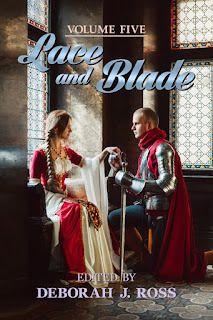 From lands distant or nearby, familiar or utterly strange, historical or imaginary, from ancient times to the Belle Époque comes a treasury of luscious, elegant, romantic fantasy. Come with us on a journey through time and across boundaries, inspired by the longings of the heart and the courage residing in even the meekest person.
From lands distant or nearby, familiar or utterly strange, historical or imaginary, from ancient times to the Belle Époque comes a treasury of luscious, elegant, romantic fantasy. Come with us on a journey through time and across boundaries, inspired by the longings of the heart and the courage residing in even the meekest person.I met Dave Smeds in the early years of my writing career through the pages of the early volumes of Sword and Sorceress, in which we each had stories. We discovered a shared background in martial arts, as well. His beautiful designs grace the covers of many of the anthologies I've edited, including this one.
Deborah J. Ross: Tellus a little about yourself. How did youcome to be a writer?Dave Smeds: One way to put it is that it was an entirelynatural thing. I did a lot of reading as a kid, and wanted to create my ownstuff. The only thing as alluring as writing fiction was to be a comic bookartist, but while I took some steps in that direction and still do make some ofmy income as an artist, I just wasn’t fast enough or good enough to realizethat particular pipe dream. Your question, though, makes me aware of howgenerational my choice was. I was born in the mid-1950s. In my youth I didn’thave the distraction of iphones and cable channels and the World Wide Web.Heck, at first, there wasn’t even any color on the television programs I watched.My leisure entertainment came in the form of paperbacks, print magazines, andcomic books. Those outlets were a big deal back then to the whole society interms of providing sustaining creative entertainment and edification. I wantedto be part of that big deal. I wonder if I would have headed in that directionif I had been part of the millennial generation. I think the answer wouldprobably be no.
DJR: Whatinspired your story in Lace and Blade 5?DS: The theme of the series is along the linesof “swashbuckling tales of romance” and of course I pointed my muse in thatdirection, but when it comes to the Lace and Blade series, my muse has prettyconsistently been a contrary wench. I saw an image in my mind of the loneadventurer wandering the land. That seemed pretty spot-on in terms of theme,but when the fellow came completely into view I saw that he was the pilot of agondola on a river, à la Charon on the River Styx if only Charon had possessedsex appeal and if only the river weren’t so singular of purpose. My plan ofcourse was for the story to involve a romance. That element is in fact in therein the final draft, but to my surprise it is unconsummated, which is not one ofmy usual modes.
Once I had the idea ofusing a river as a setting, I’m afraid I had no choice but to go forward. TheKings River of the southern San Joaquin Valley runs along the edge of the farmwhere I grew up. I spent many an hour on that waterway, floating on tractorinner tubes below the bluffs and oak trees. The water was snow melt from theHigh Sierra so it was bracing even in July, but that was great because the airtemperature of a Fresno County day in July is usually above a hundred degreesFahrenheit. I also really appreciated the safety aspect. If you get a tired ofswimming when you’re in the middle of a lake, you’re screwed. If you get tiredon a river, just tread water for a few moments and the current will carry youto the bank and you don’t have to drown after all.

DJR: What authorshave most influenced your writing?DS: In the early days, I never thought of myself as deeply influenced by any particular author, except perhaps in the sense that I loved to write heroic fantasy, and back then, anyone doing that was standing on the shoulders of Robert E. Howard and J.R.R. Tolkien. In retrospect, I see L. Frank Baum's influence upon the way I structure a story. Joseph Campbell speaks of heroic fantasy as the so-called hero’s journey, as if all examples are like that, which is to say, they are tales in which a protagonist, usually a young man, pulls himself up by his bootstraps, stands alone, and takes full credit for completion of a goal. But Baum did not write that way. He wrote what is better described as the heroine’s journey, in which his protagonist, be it Dorothy Gale or one of the many others, does not fight battles, but instead makes alliances. That’s a more subtle, complex, and dare I say, meaningful process. I see plenty of works out there that adhere to the Campbellian mode. Many are about a female protagonist and many are written by female authors, but they’re still the hero’s journey. That’s fine, but I on the other hand will go on doing what Frank showed me.
DJR: What’s themost memorable fan mail you’ve ever received?DS: A letter from a man who had served as anofficer in Vietnam, thanking me for writing “Short Timer.”
DJR: How doesyour writing process work?DS: My process would drive any other writer nuts, I suspect. The ideas -- whether it is for a scene, a character, a setting, a plot, a premise -- bubble up and I go with what fascinates me at the moment. I see the whole story as a piece and fill in the pieces almost randomly as if assembling a jigsaw puzzle. I might write the ending first. I might write a little bit that fits two-thirds of the way along. Often I will start at the beginning, but it's just about unheard of that I proceed from page one to the end in chronological order. I think that's happened only three or four times in forty-eight years of writing, and only with very short pieces.
DJR: What haveyou written recently? What lies ahead?DS: Just shy of thirty-two years after I beganit, I have finally completed a full draft of The Wizard’s Nemesis, which completes the trilogy that began withThe Sorcery Within. As I jot down theanswers to this set of interview questions, the editing and proofing andproduction phase of the novel -- and of the new editions of the first two books-- is still to come, but publication is now officially “pending.”
DJR: What advicewould you give an aspiring writer?DS: Forget about it. Quit right now. I don’tneed any more competition.
DJR: Any thoughtson the Lace and Blade series or thisbeing its final volume?DS: I’m particularly discouraged to learn thisis it, at least for now. It had barely started up again. I did four pieces forthe series, skipping only volume two. For whatever reason, be it the theme orserendipity or faith or just the workings of that contrary-wench muse, I feelas though those four pieces are among the ten best stories of my career, and Iwas looking forward to having the chance to aim at that standard again.
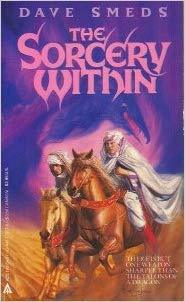 Dave Smeds has authored novels (including TheSorcery Within and X-Men: Law of the Jungle), screenplays,comic book scripts, and articles, but is best known for his short fiction. Hiswork has graced the pages of Asimov's SF, F&SF, Realmsof Fantasy, and a plethora of anthologies, including most particularly theSword and Sorceress series and the Lace and Blade series. His wonderful short fiction piece, "The Wind's Kiss," first appeared in Lace and Blade 4. It's a marvelous story, exquisitely written, full of pitch-perfect heart. Now it's also available in Dave's collection Swords, Magic, and Heart (see the cover below).
Dave Smeds has authored novels (including TheSorcery Within and X-Men: Law of the Jungle), screenplays,comic book scripts, and articles, but is best known for his short fiction. Hiswork has graced the pages of Asimov's SF, F&SF, Realmsof Fantasy, and a plethora of anthologies, including most particularly theSword and Sorceress series and the Lace and Blade series. His wonderful short fiction piece, "The Wind's Kiss," first appeared in Lace and Blade 4. It's a marvelous story, exquisitely written, full of pitch-perfect heart. Now it's also available in Dave's collection Swords, Magic, and Heart (see the cover below). January 20, 2025
Shakespeare on Tyrants: Richard II and Drumpf
What Shakespeare revealed about the chaotic reign of Richard III – and why the play still resonates in the age of Donald Trump
 In this circa 1754 illustration, two women scold Richard III in Shakespeare’s play. Universal History Archive/Getty Images) by David Sterling Brown,
Trinity College
In this circa 1754 illustration, two women scold Richard III in Shakespeare’s play. Universal History Archive/Getty Images) by David Sterling Brown,
Trinity College
Written around 1592, William Shakespeare’s play “Richard III” follows the reign of England’s infamous monarch and charts the path of a charismatic, cunning figure.
As Shakespeare depicts the king’s reign from June 1483 to August 1485, Richard III’s kingdom was wrought with chaos, confusion and corruption that fueled civil conflict in England.
As a scholar of Shakespeare, I first thought about Richard III and his similarities with Donald Trump after the latter’s debate with President Joe Biden in June 2024. Those similarities – and Shakespeare’s depictions – became even clearer after Trump’s election in November 2024.
Shakespeare’s play highlights the flawed character of a man who wanted to be, in modern terms, a dictator, someone who could do whatever he pleased without any consequences.
In his 1964 essay, “Why I Stopped Hating Shakespeare,” writer James Baldwin concluded that Shakespeare found poetry “in the lives of people” by knowing “that whatever was happening to anyone was happening to him.”
“It is said that Shakespeare’s time was easier than ours, but I doubt it,” Baldwin wrote. “No time can be easy if one is living through it.”
 An undated portrait of Richard III. Universal History Archive/Getty Images A villain?
An undated portrait of Richard III. Universal History Archive/Getty Images A villain?In Act 2, Scene 3 of Shakespeare’s play, a common citizen says Richard is “full of danger.”
“Woe to the land that’s govern’d by a child,” the citizen further warned.
Beyond hiring murderers to kill his own brother, Shakespeare’s Richard was keen on belittling and distancing himself from people whom he viewed as being not loyal or being in his way – including his wife, Anne.
To clear the way for him to marry his brother’s daughter – his niece Elizabeth – Richard spread what now would be called fake news. In the play, he tells his loyalists “to rumor it abroad that Anne, my wife, is very grievously sick” and “likely to die.”
Richard then poetically reveals her death: “Anne my wife hath bid this world goodnight.”
Yet, before her death, Anne has a sad realization: “Never yet one hour in Richard’s bed / Did I enjoy the golden dew of sleep.”
That sentiment is echoed by Richard’s mother, the Duchess of York, who regrets not strangling “damned” Richard while he was in her “accursed womb.”
As Shakespeare depicts him, Richard III was a self-centered political figure who first appears alone on stage, determined to prove himself a villain.
In Richard’s opening speech, he even says that in order to become king, he will manipulate his own brothers George, the Duke of Clarence, and King Edward IV, “in deadly hate, the one against the other.”
But as his villainous crimes mount up, Richard shares a rare moment of self-awareness: “But I am in / So far in blood that sin will pluck on sin.”
Shakespeare’s Richard III and TrumpWhile the details of Trump’s and Richard’s lives differ in many ways, there are some similarities.
Much like Trump during his first term, Shakespeare’s Richard did not lead with morals, ethics or integrity.
Richard lied compulsively to everyone, as his soliloquys that contain his innermost thoughts make clear.
 An illustration of English writer William Shakespeare (circa 1600). Rischgitz/Getty Images
An illustration of English writer William Shakespeare (circa 1600). Rischgitz/Getty Images Like Trump, Richard used empty rhetoric to persuade people with “sugared words” – he was not interested in speaking or promoting truth.
Moreover, Shakespeare’s Richard was a sexist and misogynist who verbally and physically disrespected women, including his wife and mother.
In the play, for example, Richard calls Queen Margaret, widow of King Henry VI, a “foul wrinkled witch” and a “hateful withered hag,” thus disparaging her older age.
He refers to Queen Elizabeth, wife of Edward IV, as a “damned strumpet” or prostitute, which she wasn’t.
Additionally, in order to cast doubts on his nephews’ legitimate claims to the throne, Richard spread false rumors about his mother, claiming that she was unfaithful.
 Kamala Harris shakes hands with Donald Trump before their debate. AP Photo/Alex Brandon
Kamala Harris shakes hands with Donald Trump before their debate. AP Photo/Alex Brandon For his part, Trump has no shortage of disparaging remarks about women. He once called his Democratic presidential rival Hillary Clinton “the devil” and characterized former U.S. House Speaker Nancy Pelosi as “crazy.”
Trump repeatedly peppered Vice President Kamala Harris during the presidential campaign with sexist and racists attacks.
He initially refused to pronounce her name correctly and openly mocked her racial identity as a Black woman, even questioning her “Blackness.”
A new day?Like Trump, Richard III used religion to manipulate and confuse public perception of his amoral image.
In the play, Richard stages the equivalent of a modern-day photo op, standing between two “churchmen” with a “prayer-book” in his hands.
Much like Richard, Trump has courted evangelicals and used organized religion to his political advantage, most publicly by selling a “God Bless the USA Bible.”
Trump’s 2020 photo op in front of St. John’s Church in Washington is another example. It occurred during protests over the murder of George Floyd, an unarmed Black man killed by a white police officer. Police in riot gear used tear gas to force protesters away from the White House; then Trump was escorted to the nearby church along with several administration officials.
As a political leader, Richard III left a legacy in English history as one of England’s worst monarchs.
That legacy includes his decisive defeat in the Battle of Bosworth Field in 1485 that led to his death and to a new era for England under King Henry VII.
After winning the throne, the new king offered a message of hope that suggested England would one day emerge from its time of civil discord:
Let them not live to taste this land’s increaseThat would with treason wound this fair land’s peace!
Now civil wounds are stopped, peace lives again. That she may long live here, God say amen.
David Sterling Brown, Associate Professor of English, Trinity College
This article is republished from The Conversation under a Creative Commons license. Read the original article.
January 17, 2025
Book Review: Another Gem from Ann Leckie

Translation State,by Ann Leckie (Orbit)
Ann Leckie is a jewel of modern science fiction. Herworldbuilding and characters are consistently original, nuanced, deeplyresonant, and well thought-out. To describe the plot and premises of Translation State is to ignore hermasterful layering of themes and her ability to create truly relatable aliencharacters.
This story centers on three characters: Enae, a reluctant diplomat tasked withhunting down a fugitive who has been missing for over 200 years; Reet, anadopted mechanic who is desperate to learn about his genetic roots to explainwhy he operates so differently from those around him. And Qven, created to be aPresger translator, an intermediary between the dangerous—as inworld-destroying—Presger and human civilization. The Presger are truly alien,and it’s only through a centuries-old Treaty and the translators that theyhaven’t inadvertently destroyed entire systems of inhabited worlds.
Presger translators are far from benign; in their formativestages, for example. they think nothing of vivisecting or slaughtering theirage-mates. They must be taught human customs, everything from wearing clothes,making small talk, drinking tea, and sitting on furniture to not casuallyeating one another. Qven is no exception, and Reet very well may be at leastpart translator, although his adopted parents have instilled human values inhim.
Leckie manages to make both characters, as well as theendearing Enae, sympathetic, understandable, and even upon occasion admirable.She introduces Enae first, inviting the reader into a complex universe througha single relatable character. I had a harder time with Reet initially, but bythe time it was clear the story lines would merge, the deeper themes ofconsent, becoming fully oneself, loving another as I-Thou, and the meaning ofbeing human had me hooked. I loved Leckie’s subtle hand in conveyingsophisticated, often bizzare cultural conventions without a trace of rammingthem down the reader’s throat.
Leckie also portrays gender conventions in ways that areoccasionally humorous—like the way the Imperial Radch insist on using “she” foreveryone, but Reet keeps correcting them, “I’m a he!” and Qven, for the firsttime given a choice, insists on being an “e” (and, after seeing theunconditional love and support of Reet’s three moms, makes a conscious choiceto become human).
Highly recommended.
January 10, 2025
Book Review: Nothing New in Camelot
The Cleaving,by Juliet E. Mckenna (Angry Robot)
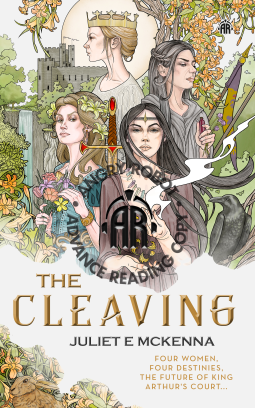
I was initially intrigued by the description of this book asbeing a “retelling that follows the tangled stories of four women: Nimue,Ygraine, Morgana, and Guinevere, as they fight to control their own destiniesamid the wars and rivalries that will determine the destiny of Britain.” Itbegan auspiciously enough, from the viewpoint of Nimue, who hides her magicalabilities while in her service to Queen Ygraine. The story unfolded with theascendency of Uther Pendragon and his schemes to unite Britain under his ruleand to seduce Ygraine and father Arthur. Beat after emotional beat intensifiedmy disappointment as I discovered very little that was fresh and new. Insteadof being a ground-breaking reinterpretation of the Arthurian story cycle in thefootsteps of Marion Zimmer Bradley’s groundbreaking TheMists of Avalon (1984), The Cleaving readas a tepid retelling of a story we all know from having seen The Sword in the Stone. We knowUther is going to sleep with Ygraine (although I found the rape scenegratuitously violent), just as we knowArthur is going to pull the sword out of the stone (and survive all the fightshe gets into).
Without dramatic suspense to keep me reading, I found thecharacters inconsistent, acting only to serve the needs of a pre-determinedplot, and often downright annoying. Nimue came across as passive-aggressive,without a meaningful goal that she consistently strives for; she reacts rather than initiates. Uther wasone-dimensional as a blustering bully. Ygraine mopes around, a paralyzed victimwhose meaning in life seems to be her daughters (not Arthur). Merlin’s solecare is for the nebulous “future of Britain,” although he meddles freely in thelives of others without thinking through the consequences. As for Arthur, he’sa tantrum-prone brat with very little noble about him.
Pedestrian prose and inconsistent motivation would be lessdetrimental to a more original vision. If you’re a dedicated fan of Le Morte d’Arthur and don’t mind a storythat adds little to the established literature, give this one a try.
January 7, 2025
Music: The Danish String Quartet
Sometimes I hear a piece of music that makes the entire day better. This one feels like strolling through sunshine and dappled shade.
January 3, 2025
Book Review: Saving the Faerie Prince
Emily Wilde's Compendium of Lost Tales, by Heather Fawcett (DelRey)
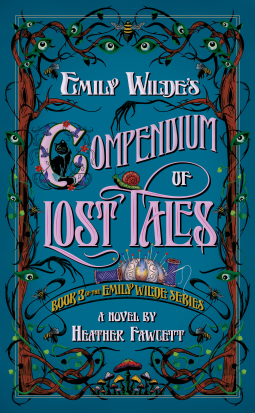
I’m an unabashed fan of Heather Fawcett’s “Emily Wilde”series. Falling loosely in the genre of “Victorian lady scholar-adventurer”tales, these stories combine the best of the intrepid, self-reliant heroine whofalls in love despite her better judgment with a passion for academic inquiry anda penchant for getting into trouble. Emily Wilde is a professor of dryadology,that is, the study of all things Fae, which in this world are real if often misunderstoodand hidden. In previous adventures, she butted heads with fellow scholar,dashing and mercurial Wendell Bambleby, who turned out to be a Faerie prince inexile. Discovering Wendell’s identitywasn’t enough, however. Emily found herself called upon to rescue him frompoisoning by his evil stepmother and then to help restore him to his magical realm.Now she’s finally agreed to his marriage proposal despite all the folkloric warningsabout how inconstant and lethal the courtly faw can be. She doesn’t know if shecan truly trust him to remain himself once he’s back on the throne. But she trustsher own heart and the truths that underlie the stories whose study is her life’swork. None of this has prepared her for Wendell’s kingdom or the role she mustsoon play as its queen. As transcendently beautiful as this realm is, darknessstirs in the form of the stepmother’s parting revenge. The only way to save therealm and its people is for Wendell to sacrifice himself—which Emily refuses toconsider as an option. Wendell may have other ideas.
This third volume in the series is every bit as captivatingas the earlier ones, but it seemed to me that the characters were deeper and morecomplex, their inner conflicts more finely drawn. The questions have shiftedfrom “Will he/won’t he?” and “Will she/won’t she?” to “What will he give tosave his world and how will she save him from his better nature?” As before,the answer lies in the depths of folklore, the resonant truths that make thesestories told again and again over generations. Those depths speak as powerfullyto modern readers of Fawcett’s books as they do to the folk inhabiting them.
Truly a joy to read and savor.
January 1, 2025
Happy New Year: 2019 Intentions, Goals, and Wishes
 I'm not big on resolutions, New Year's orotherwise. More often than not, all they do is set me up to fail or put me incompetition with others, and who needs that? However, I do see a great deal ofvalue in taking some time to clarify where I'm going in my life, if it's whereI want to be going, and what I'd like to see different.
I'm not big on resolutions, New Year's orotherwise. More often than not, all they do is set me up to fail or put me incompetition with others, and who needs that? However, I do see a great deal ofvalue in taking some time to clarify where I'm going in my life, if it's whereI want to be going, and what I'd like to see different.Years (as in, decades) ago, a friend suggestedmaking a list of goals instead of resolutions, and to break them down into1-year, 5-year, 10-year, and lifetime goals. I did that for quite a while, andI still have the notebook I kept them in. It's fascinating to look back at whatI thought I wanted, 30 years ago -- what I have achieved, what I no longerwant, and what is no longer possible.
Along the way, I realized that some of thesethings were within my power to achieve, but others were not. I might long forthem, but I could not bring them about, or not entirely by my own efforts. Forinstance, finishing a novel or studying Hebrew are things I can choose to do,but my children being happy, however much I might desire to see that comeabout, is not something I myself can create. These things are wishes,not goals. Of course, many things are both. On my list is to write a work ofenduring value -- I can write the best stories that are in me, but how they arereceived and how they endure the test of time is another matter entirely. Ihave no say over that.
For 2007, the year I turned 60:1 year goals:Finish (a specific book I was working on)Transfer family videos to DVDCelebrate becoming a crone
5 year goals:Keep writing good stuff
10 years/lifetime:
Be active and happyDo something activist and outrageous
As I wrote down goals and wishes, year afteryear, I found that they changed in other ways. The specifics tended to beresolved or discarded, but things emerged that were more general and had moreto do with quality and spirit than measurable achievements. An example --writing something that would speak to people long after I'm gone asopposed to selling a novel or selling a particular novel -- shows thischange. The farther out in time the goals/wishes, the less they resembled"resolutions." I've started to think of them as intentions instead.
Yet, the universe does not cooperate with our bestintentions. I can wish for and intend to have a year that is one way but getpresented with situations and challenges I had no way of anticipating and endup with something quite different, marvelous or heart-breaking. Part of theshift from resolutions to intentions is theintroduction of flexibility, of a suppleness of response to whatever lifebrings. Life is not limited by my imagination (or my fears). It is anadventure, not a fixed syllabus.
For 2019, the year I turned 72, my intentionsare:1 year intentions:Write well most daysExercise well most daysMake music most daysLet the people I love know how precious they areto me
5 years/10 years/lifetime:Keep writing good stuffLive a happy lifeBe of service to others
My wishes are:A more compassionate worldA return to political sanityHope for the devastation of global warmingSaving the most vulnerable people from povertyand climate change
Now I am 77 and as we enter the treacherous waters of 2025, not much has changed. For me, this affirms a true discernment of how I wish to live my life.
Photo by Cleo Sanda (1962-2012), may her memorybe for a blessing.
December 27, 2024
Book Reviews: A Monster-Wild West Mashup Fails
Melinda West, MonsterGunslinger, by KC Grifant (Bridgid’s Gate Press)
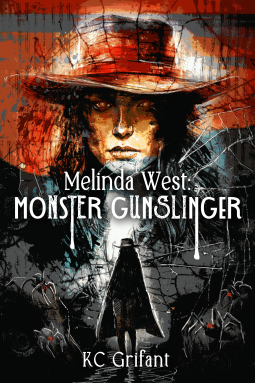
I’m a softie for mash-ups like Jane Austen with supernaturalcreatures or, in this case, the Wild West with monsters. Throw in a strong,competent woman protagonist and you get a fun read, one in which I’m willing tooverlook a lot. I won’t insist on peerless prose or immaculately consistentworldbuilding in a “fast, fun read” novel.
Melinda West, MonsterGunslinger had a great deal going for it, starting with a landscapeinhabited by a slew of weird, wildly creative monsters (giant flying scorpions,psychic bugs, things with made-up names). All the creatures seem bent onmayhem, leaving me to wonder whatever happened to the herbivorous varieties,but such details are not essential in “fun, fast read” Monsters-in-Wild Westtales. At the outset, I found the easy banter between Melinda and her partner,Lance, appealing, as they offer their services to desperate settlers beset bythe aforementioned monsters.
Therein lay the first of several elements that kicked me outof the story. I lost sympathy for Melinda (and Lance, but mostly Melinda) whena wave of scorpion-monsters emerges from a mine and begins to swarm. Melindademands payment from the sheriff of the beleaguered town. As in, right now orthey’ll let the creatures do their worst. We call bullying vulnerable folks“punching down,” and it’s not okay in a sympathetic character. As it turnedout, the sheriff had the payment ready, but what if he hadn’t? Would Melindaand Lance let the town be destroyed? Were they in it only for the money? Ifound this exploitative moment so off-putting, I never re-connected with thecharacters.
Following this, there’s a lot of dialog about gettingtogether enough money to retire (someplace without monsters), a reunion, andthe beginning of a quest that is no more believable than anything else in thisworld. By this time, the inconsistencies in worldbuilding, emotional distancefrom the characters, and amateurish prose turned continued reading into a slog.The prose occasionally rose to the level of adequate but was all too oftenclunky, pretentious, and laced with emotional manipulation of the reader. As Isaid, I can put up with a lot for the sake of a “fun, fast” story. I rolled myeyes at, “They continued upwards, the horses losing steam while they stompedthrough the snow mounds,” but kept going (these are normal horses, notmechanical, btw, and I leave it to you to imagine a horse stomping throughsnow). Here’s the line that caused me to stop reading: “His face hung grimmerthan she had ever seen.”
Of course, YMMV.




